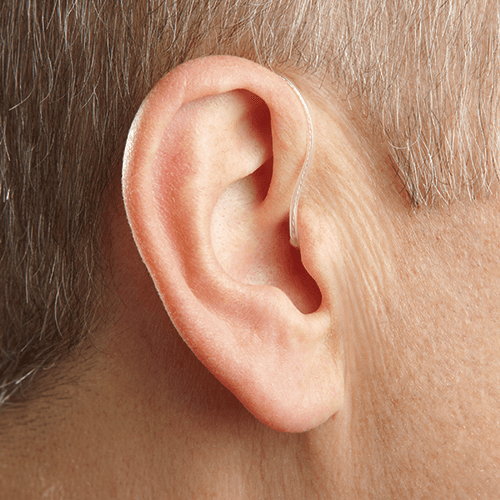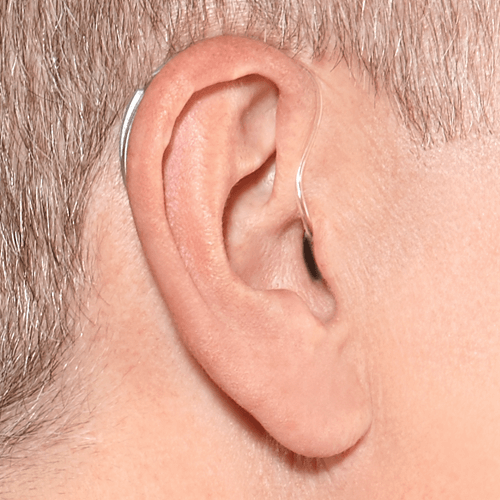Hearing Aid Overview
Types of Hearing Aids
With so many different hearing aid options available, it can be overwhelming to understand what kind is right for you. Although this decision is best made in concert with a hearing professional, the following descriptions of hearing aid types will help you understand the differences, as well as the benefits and challenges each style can pose.
FREQUENTLY ASKED QUESTIONS
Receiver in Canal (RIC)
The Receiver In Canal (RIC) hearing aid (also known as a Receiver In The Ear or RITE) is a small device that rests behind the ear. The case at the back of the ear houses most of the technology, while a small diameter wire sends the electrical signal to the receiver (speaker) that is placed in the ear canal. Most often a flexible dome is placed over the receiver, but it can be encased in a mold or shell. It’s discrete, small, powerful, and more repairable in the office, making it the most frequently sold device in the US.

In the Canal (ITC)
An In The Canal (ITC) hearing aid is smaller than the RIC and fits more discreetly into the bowl of the ear and into the ear canal. It is suitable for hearing losses from mild to moderately severe. It can include all levels of technology and often can have multiple features, including telephone switches or additional program options. Canal aids are able to handle multiple microphones to accommodate the user needs of reducing noise in adverse listening situations. Ongoing and consistent maintenance is needed to keep it clear of wax and debris.

Completely in the Canal (CIC)
A Completely In the Canal (CIC) hearing instrument is the most discreet style available. It is often unseen in the ear canal, except by the most curious observer. Even then it is not clear that it is a hearing device. It appears as more of a shadow because it tends to blend in more that the larger ITC devices. It is suitable for all levels of technology and can be fit to people with mild to moderately severe losses. It is not the best choice for people with manual dexterity problems or very poor vision. At present it cannot accommodate multiple microphones due to its small size. It is able to have noise reduction circuits that are built into the tiny shell. Ongoing and consistent maintenance is needed to keep it clear of wax and debris.

Behind the Ear (BTE)
A Behind The Ear (BTE) hearing aid is a hearing aid enclosed in a small plastic cast that is worn around the back of the ear, with an ear mold attaching it to the bowl an canal of the ear. It is available in all levels of technology and can be used for all hearing levels including those from the mild to the severe and profound category. Often it is the best choice for children who need lots of flexibility and durability. Maintenance may be less than needed with some other styles.
Frequently Asked Questions
The following FAQs can help you understand some other features of hearing aids that may be of interest.
Start your journey to better hearing today!
contact us

